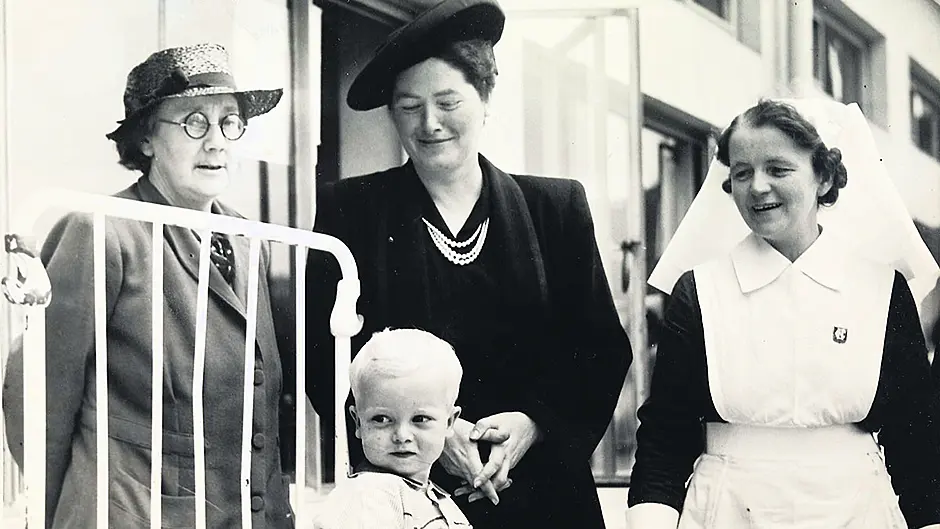As scientists scramble to find a vaccine for Covid-19, Robert Hume recalls a remarkable woman who secured vital vaccines for children, witnessed the Easter Rising and carried out post mortems on Spanish Flu victims
DOROTHY Stopford ¬began her career as a medical officer at the West Cork Dispensary in Kilbrittain in 1921.
‘She was the only applicant for the job,’ says her biographer Anne MacLellan, ‘and she felt that they only gave it to her as a woman because they really had no choice.’
Dorothy had trained at Trinity College Dublin – one of the oldest medical schools in Europe. She had witnessed the Easter Rising, and had carried out post mortems on victims of the 1918 Spanish Flu epidemic.
Her appointment to Kilbrittain gave her the opportunity to be ‘in touch with human beings’ rather than ‘dry bones’, or so she said! And of course Dorothy could also think about summer swims and long walks. In fact, while sitting by the cliffs on the Old Head of Kinsale, she wrote: ‘It is so peaceful and the sea so blue. I could sit here forever. I hope very few people will be sick so that I have loads of time to loaf here and dream.’
Far from being peaceful, Kilbrittain was a hotbed of guerrilla warfare during the War of Independence. The area was the location of an IRA training camp, as well as a barracks housing the Black and Tans.
Along with treating those hurt during the War of Independence and the Civil War, Dorothy acted as medical officer for the local flying column, and offered first aid classes to the ‘lads’ of the West Cork IRA.
Now her focus was on battle injuries and she demonstrated ways of stopping haemorrhages using tourniquets. But the main problem for many soldiers was personal hygiene and scabies.
Dorothy was a fervent nationalist, a member of Cumann na mBan and as the ‘rebel doctor’ was unfazed by the daily shootings during the conflicit. ‘It is always fun here, something happening every minute,’ she quipped.
This pipe-smoking medic – who had once pondered the idea of becoming a professional artist – described herself as ‘fat and rosy, and very fit’, and caused a sensation in her riding breeches and spectacles.
Dorothy also spent one day each week at Ballinadee, caring for patients there. However, as she was denied a bicycle permit, she rode the three miles each way on a horse supplied by the IRA.
In 1923 Dorothy left the dispensary and moved to Dublin, where she was appointed house surgeon and later physician in St Ultan’s Children’s Hospital. Over the next few years she became a key figure in the development of paediatrics in Ireland, taking a special interest in tuberculosis, which affected children’s bones and joints as well as their lungs.
While on a hill walk in Wicklow in 1923 she met district justice and local historian Liam Price, a tall thin man with a slight limp. Price, like Dorothy, was a keen nationalist. Next year they married and settled into a grand house in Fitzwilliam Place.
When on holiday in Vienna with Liam in 1931, Dorothy witnessed children with TB (tuberculosis) being given x-rays and tuberculin skin tests. It was here that she began her campaign to provide the same treatment for Irish children at St Ultan’s as tuberculosis was wreaking havoc among children from poor Dublin families.
As the disease swept across Ireland during the 1930s, Dorothy investigated how other countries tackled TB.
In 1935 she attended conferences in Italy, and the following year visited Sweden, where she saw a new BCG vaccine against TB being trialled in Gothenburg.
In 1937 the Irish government gave her permission to import the vaccine, and she inoculated two tiny babies.
After the Second World War Dorothy imported the vaccine on a much wider scale.
She published articles and a textbook on TB in childhood. However, Dorothy drew the wrath of John Charles McQuaid, the Catholic Archbishop of Dublin, by attempting to set up a Protestant-led Anti-TB League in 1943.
During the late 1940s, when a new BCG unit at St Ultan’s Hospital was being completed, she was responsible for rolling out the national BCG vaccination campaign that helped save the lives of thousands of children.
Dorothy Stopford Price was ‘a true heroine of the Irish public health system’, Catriona Crowe of the National Archives said.
Sadly, in 1954 Dr Dorothy died from a stroke, before she could witness the end of the tuberculosis epidemic in Ireland.







